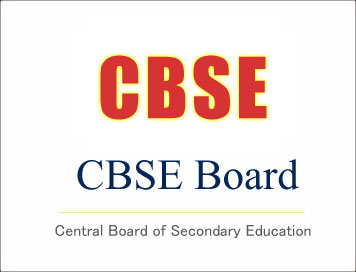(Download) CBSE Class X Important Questions: 2012 - Science (Magnetic Effect)
Disclaimer: This website is NOT associated with CBSE, for official website of CBSE visit - www.cbse.gov.in
Important Questions – 2012
Class – X
Subject – Science (Magnetic Effect)
1. i. Draw the pattern of
the magnetic field lines of current carrying solenoid. ii. What does the pattern of the field lines inside the solenoid indicate?
iii. Write one application of the current carrying solenoid.
2. A student performs an experiment to study magnetic effect of
current around a current carrying conductor. He reports that –
i. For a given battery, the degree of closeness of a north pole decreases when
the compass needle is kept at a point farther away from the conductor.
ii. The direction of deflection of north-pole of a compass needle kept at a
given point near the conductor remains unaffected even when the terminals of the
same battery sending current in the wire are interchange. Which of the above
observations of the student appears to be wrong and why?
3. a. Explain the meaning of ‘electromagnetic’ and ‘induction’ in
electromagnetic induction.
b. On what factors does the value of induced current produced in a circuit
depend?
c. Name and state the rule used for determination of direction of induced
current.
d. State one practical application of this phenomenon in everyday life.
4. a. Sketch magnetic field lines around a current carrying straight
conductor.
b. What is meant by the term ‘frequency’ of alternating current? What is its
value in India?
c. Why is AC considered to be advantageous over DC for long range transmission
of electrical energy?
5. a. Why does a current carrying conductor kept in a magnetic field
experiences force?
b. On what factors does the direction of this force depend?
c. Name and state the rule for the determination of direction of this force.
6. a. What is magnetic field? How can the direction of magnetic field
lines at a place be determined?
b. State the rule for the direction of magnetic field produced around a current
carrying conductor.
c. Draw sketch of field lines due to a current carrying straight conductor.
d. What is an electric fuse? What is its function in the circuit?
7. a. What is solenoid?
b. Draw a sketch of pattern of field lines of magnetic field through and around
a current carrying solenoid.
c. Consider a circular loop of wire lying in the plane of the table. Let the
current pass through the loop clockwise. Apply the right hand rule to find out
the direction of magnetic field inside and outside the loop.
8. a. When is the force experienced by a current carrying conductor
placed in a magnetic field the largest?
b. State the rule which gives the direction of magnetic field associated with a
current carrying conductor.
c. What will be the frequency of an AC, if the direction changes after every
0.02 second?
d. Complete an electric circuit to demonstrate that an electric current carrying
wire behaves like a magnet. If a compass needle is placed near the wire, what
happens to it on flowing current in the circuit? What happens, if the direction
of the current is reversed?
9. a. What is a uniform magnetic field? Draw a diagram to represent
uniform magnetic field.
b. A positively charged particle projected towards east is deflected towards
north by magnetic field. What is the direction of magnetic field?
c. State the rule applied by you to find the answer of part (b). d. Describe an
activity to show, how you can make an electromagnet in your school library.
10. Imagine you are sitting in a room with your back to one wall. An electron beam, moving horizontally from front wall towards the back wall, is deflected by a magnetic field to your right side. What is the direction of magnetic field? Name the rule applied. State the rule also.
